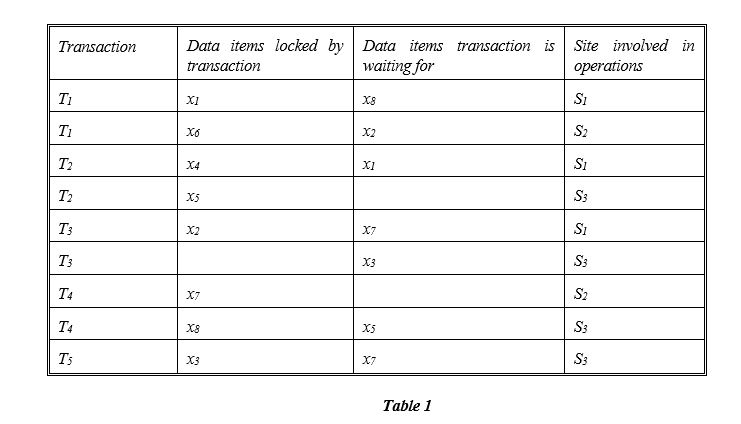Consider six transactions T1, T2, T3, T4, and T5 with:
- T1 initiated at site S1 and spawning an agent at site S2,
- T2 initiated at site S3 and spawning an agent at site S1,
- T3 initiated at site S1 and spawning an agent at site S3,
- T4 initiated at site S2 and spawning an agent at site S3,
- T5 initiated at site S3.
The locking information for these transactions is shown in Table 1. Produce the local wait-for-graphs (WFGs) for each of the sites. What can you conclude from the local WFGs?

Correct Answer:
Verified
Q1: The centralized two-phase commit protocol uses a
Q2: Under the three-phase commit protocol, discuss how
Q4: One of the most well-known methods for
Q5: Using the above transactions, demonstrate how Obermarck's
Q6: Discuss why traditional transaction management protocols are
Q7: Case Study - Library System
The librarian will
Q8: Give your definition of an Object-Oriented Database
Q9: Despite the superior expressive power of the
Q10: Object databases have roots in both programming
Q11: Discuss the concept of object identifiers (OIDs)
Unlock this Answer For Free Now!
View this answer and more for free by performing one of the following actions

Scan the QR code to install the App and get 2 free unlocks

Unlock quizzes for free by uploading documents